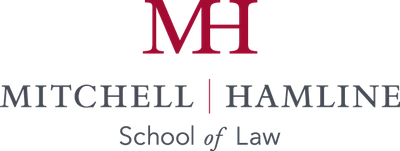Mitchell Hamline School of Law is committed to complying with all applicable intellectual property and copyright laws of the United States. The School provides this information to assist faculty, staff and other community members in understanding and complying with copyright law. It is not a comprehensive or exhaustive guide to the wide diversity of contexts in which the use of copyrighted materials arise nor is it a substitute for legal advice.
Copyright in Education Contents
- Part 1. Copyright Generally
- Part 2. Copyright in Education Basics
- Part 3. Summary of the TEACH Act (17 U.S.C. 110(2))
- Part 4. Linking to Textual Content
- Part 5. Guidance on Applying the Factors of Fair Use
- Part 6. Linking to Audio/Visual Content from the Web in Your Canvas Course
Linking to Audio/Visual Content from the Web in Your Canvas Course
When you embed audio-visual content from YouTube, Vimeo, or other similar platforms into a Canvas course page, you are not copying and redistributing copyrighted files.
Rather, the html code of an embed link connects to an external website’s server and requests that the server begin streaming a particular video or audio file. Because the code of an embed link does not copy or download files, it is—in a legal sense—virtually indistinguishable from the in-line links that are used all over the web. No copy of the content is being stored on your server (only the HTML code for the embedded video is stored). The video stays on and is streamed from the external website’s servers. YouTube’s standard license, for example, requires you to use a link or embed the code for the videos on its servers. Copying or redistributing the content is a violation of the license.
Section 106(3) [of the Copyright Act] provides that the owner of a copyright has the exclusive right to “distribute copies or phonorecords of the copyrighted work to the public by sale or other transfer of ownership, or by rental, lease, or lending.” Under the Copyright Act, “A distribution of a copyrighted work requires an actual dissemination of copies.” Perfect 10 v. Google, Inc., 416 F.Supp.2d 828, 844 (C.D.Cal.2006) (internal quotations omitted) (“Perfect 10 I” ), aff’d in relevant part sub nom. Perfect 10 v. Amazon.com, Inc., 508 F.3d 1146 (9th Cir.2007) (“Perfect 10 II” ); see also Arista Records, Inc. v. Mp3Board, Inc., No. 00 CIV. 4660(SHS), 2002 WL 1997918, at *4 (S.D.N.Y. Aug.29, 2002). In the internet context, this means a “transfer of a file from one computer to another.” Google, Inc. [sic], 416 F.Supp.2d at 844; Perfect 10 II, 508 F.3d at 1162 (“It is the website publisher’s computer that distributes copies of the images by transmitting the photographic image electronically to the user’s computer.”).
Because the actual transfer of a file between computers must occur, merely providing a “link” to a site containing copyrighted material does not constitute direct infringement of a holder’s distribution right. See id.; see also Arista Records, Inc. v. MP3Board, Inc., No. 00 CIV. 4660, 2002 WL 1997918, at *4 (S.D.N.Y. Aug.29, 2002) (linking to content does not implicate distribution right and thus, does not give rise to liability for direct copyright infringement); In re Aimster Copyright Litig., 334 F.3d 643, 646–47 (7th Cir.2003); Ticketmaster Corp. v. Tickets.Com, Inc., No. CV 99–7654 HLH (BQRX), 2000 WL 525390, at *2 (C.D.Cal. Mar.27, 2000); Online Policy Grp. v. Diebold, Inc., 337 F.Supp.2d 1195, 1202 (N.D.Cal.2004) (“Although hyperlinking per se does not constitute direct copyright infringement because there is no copying, in some instances there may be a tenable claim of contributory infringement or vicarious liability.”) (internal citation omitted).
MyPlayCity, Inc. v. Conduit Ltd., No. 10 CIV. 1615 CM, 2012 WL 1107648, at *12 (S.D.N.Y. Mar. 30, 2012) adhered to on reconsideration, No. 10 CIV. 1615 CM, 2012 WL 2929392 (S.D.N.Y. July 18, 2012).
Linking to content that is questionable, i.e. a film in current theatrical release from an unknown hosting site could under certain circumstances be contributory copyright infringement.
